Figures
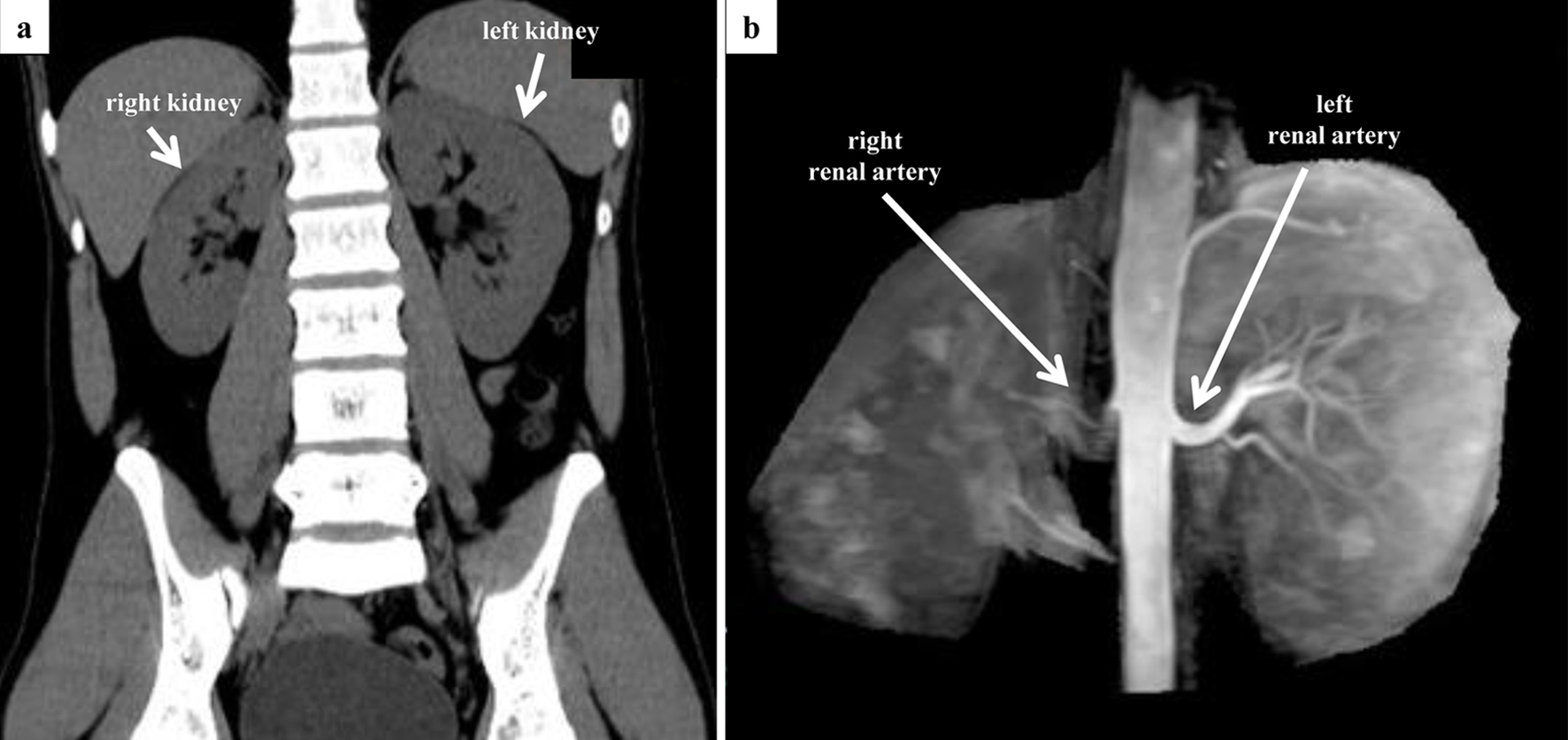
Figure 1. Preoperative CT and MRA evaluation. (a) Coronal view of abdominal CT. There is a difference in the size of the left and right kidney (right, 10.4 × 4.0 cm; left, 11.6 × 5.8 cm). No adrenal mass was observed. (b) Non-contrast-enhanced MRA. Although the entrance of the right renal artery is visible, visualization of the right renal artery itself is poor. CT: computed tomography; MRA: magnetic resonance angiography.
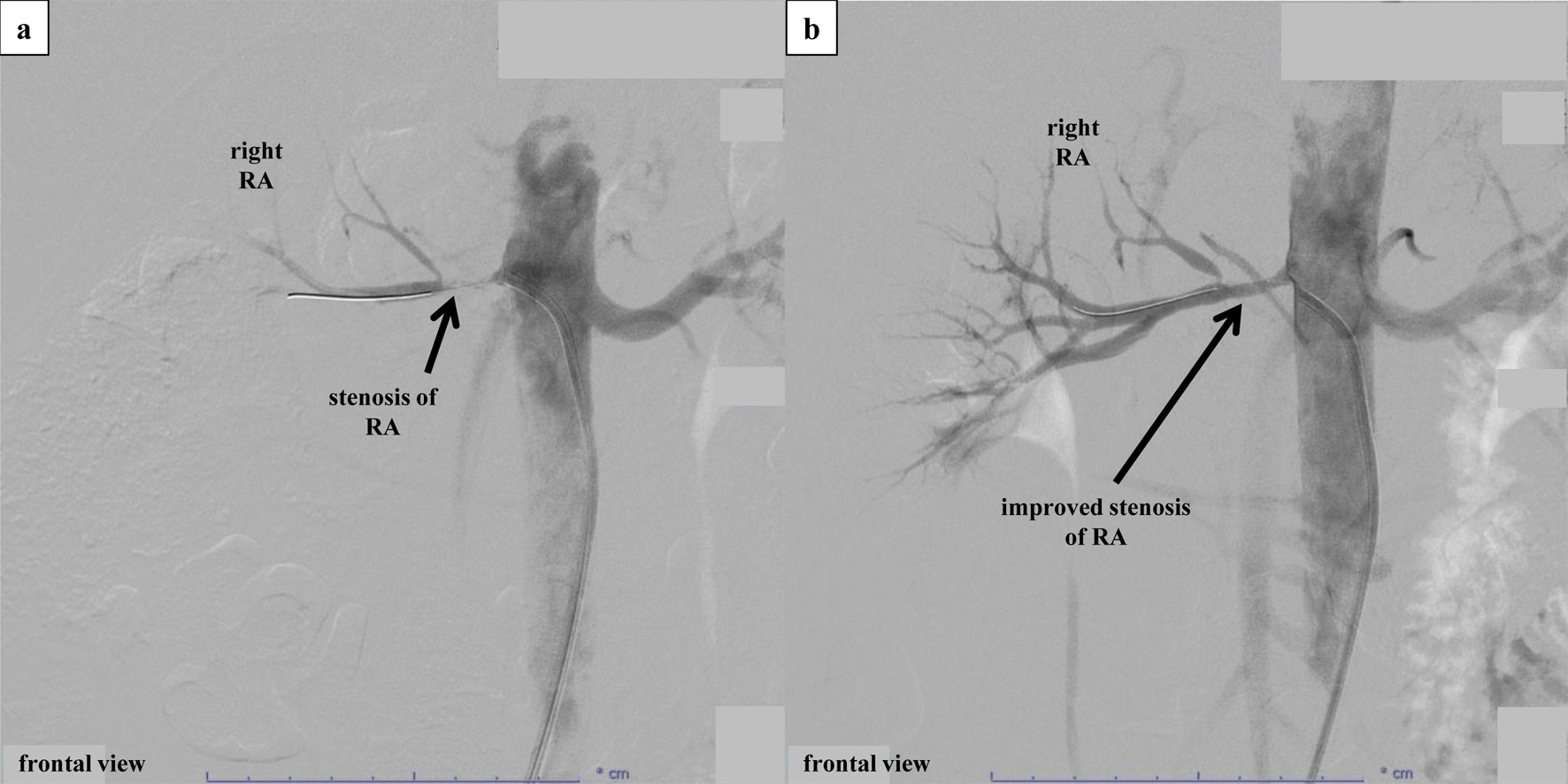
Figure 2. Percutaneous selective renal angiography and PTRA. (a) Percutaneous selective renal angiography before PTRA. Renal angiography was performed by approaching the renal artery from the right femoral artery. After performing contrast imaging of the left renal artery using a 6-French Mach 1® RDC1 catheter, severe stenosis at the ostium of the right renal artery was confirmed. Subsequently, PTRA was performed at the culprit location, and contrast imaging after insertion of an Aguru® wire (0.014 mm/180 cm) revealed a diffuse stenosis approximately 1.5 cm from the renal artery ostium. The lesion was observed using IVUS (Fig. 3a) before performing balloon angioplasty. After balloon angioplasty using a Sterling® (4.0 × 15 mm) catheter, a partial dissection-like lesion was observed while observing the culprit location via IVUS. Afterward, long inflation was performed on the entire stenosis using an NSE PTA® (4.0 × 40 mm) catheter. However, dilation to a low pressure of 3 atm was the limit due to the sensation of back pain in the patient. (b) Percutaneous selective renal angiography after PTRA. Although the dissection remained visible on IVUS (Fig. 3b), the right renal artery improved from 99% stenosis to 50% stenosis. IVUS: intravascular ultrasound; PTRA: percutaneous transluminal renal angioplasty.
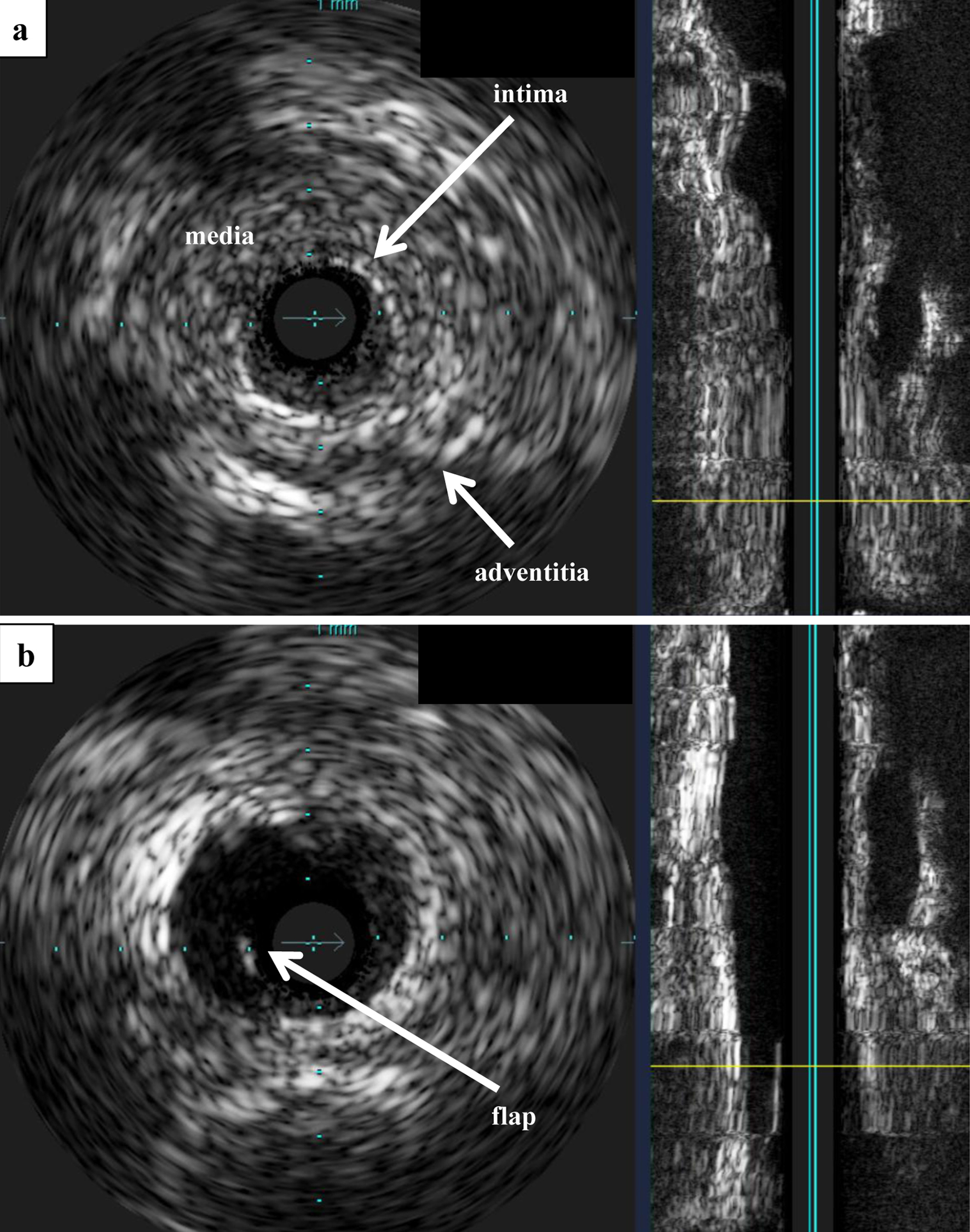
Figure 3. IVUS. (a) IVUS before PTRA. Observation of the lesion using Eagle Eye® IVUS revealed no calcification, and the three-layered structure of the tunica intima, tunica media, and tunica adventitia was unclear and concentrically thickened. (b) IVUS after PTRA. After balloon angioplasty, a flap that appeared to be partially dissected was observed. IVUS: intravascular ultrasound; PTRA: percutaneous transluminal renal angioplasty.
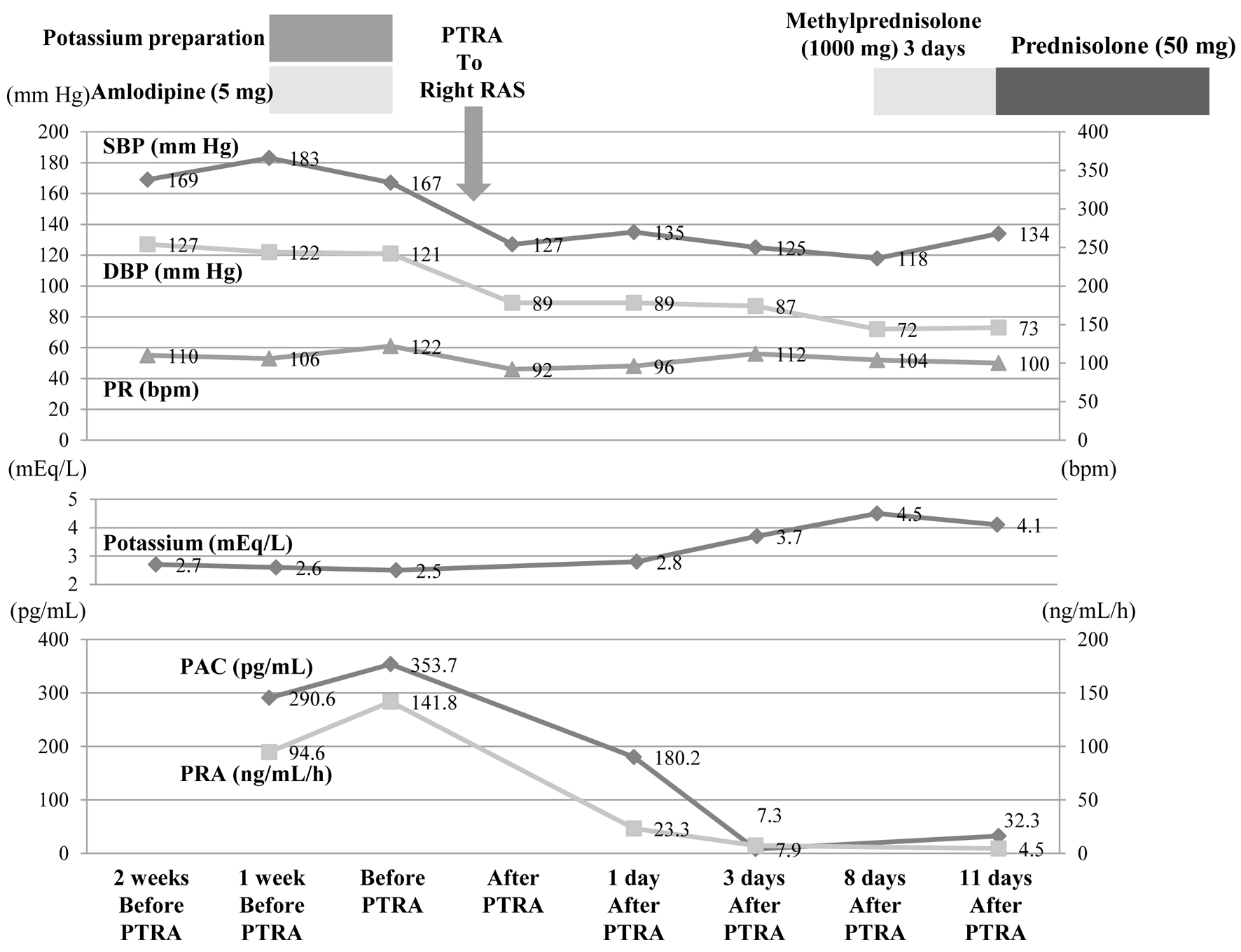
Figure 4. After PTRA was performed, SBP, DBP, PRA, and PAC decreased markedly, and potassium normalized. These changes have been maintained since then. DBP: diastolic blood pressure; PAC: plasma aldosterone concentration; PR: pulse rate; PRA: plasma renin activity; PTRA: percutaneous transluminal renal angioplasty; RAS: renal artery stenosis; SBP: systolic blood pressure.
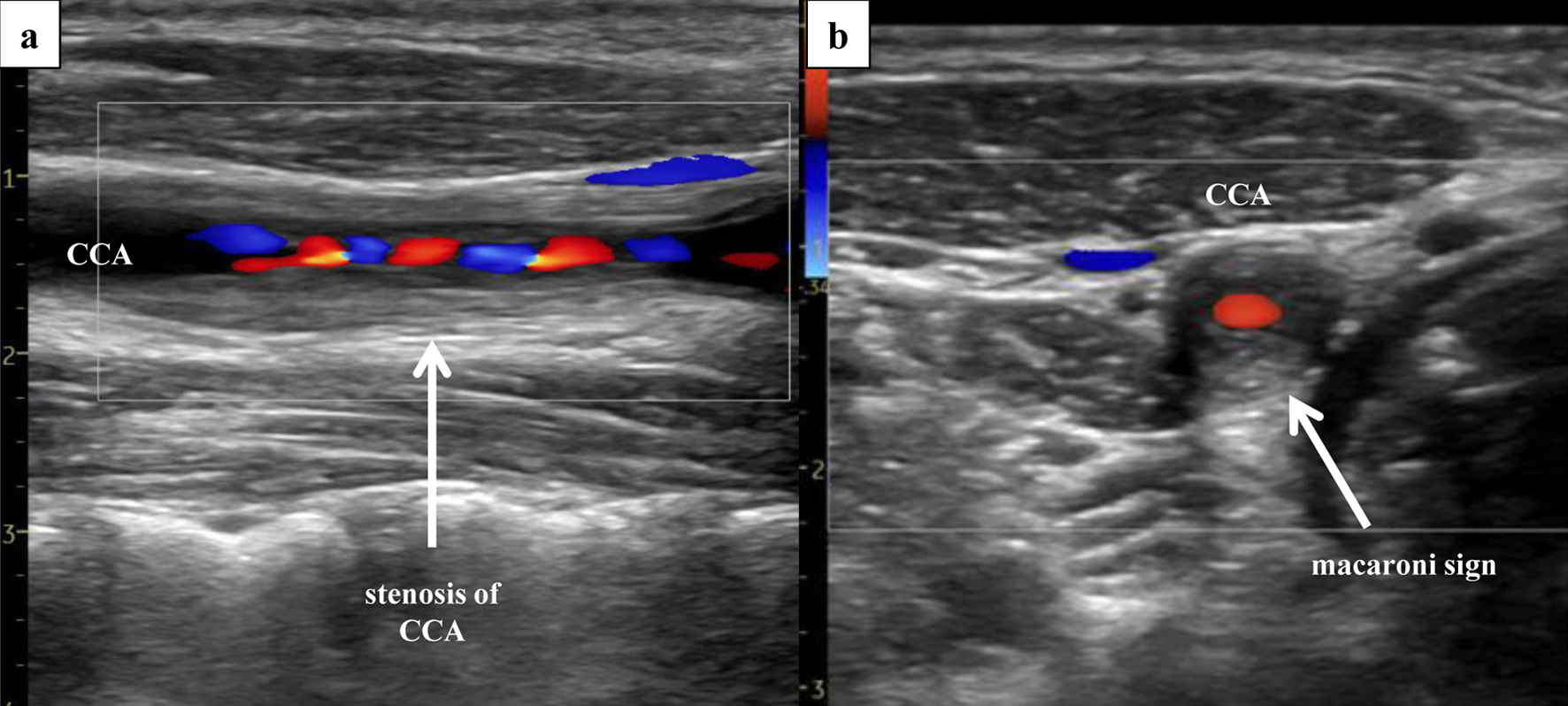
Figure 5. Right ultrasonography of the CCA. Ultrasonography of the CCA, performed 3 days after PTRA, revealed severe stenosis (area method, 97%; NASCET method, 66%; PSV, 310 cm/s) of the right CCA, with presence of the “macaroni sign”. (a) Sagittal section (Doppler). (b) Coronal section (Doppler). CCA: common carotid artery; PSV: peak systolic velocity; PTRA: percutaneous transluminal renal angioplasty.

Figure 6. Aortic findings on non-contrast-enhanced MRA and contrast-enhanced CT. Severe stenosis of the right common carotid artery and inflammation within the wall of the descending aorta were confirmed. (a) Non-contrast-enhanced MRA. (b) Three-dimensional contrast-enhanced CT. (c) Late-phase CT shows a double ring-like pattern of the thickened aortic wall. CT: computed tomography; MRA: magnetic resonance angiography.





